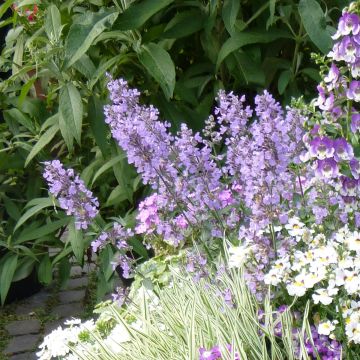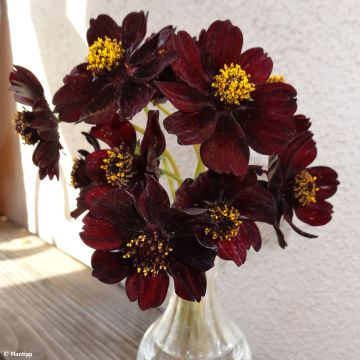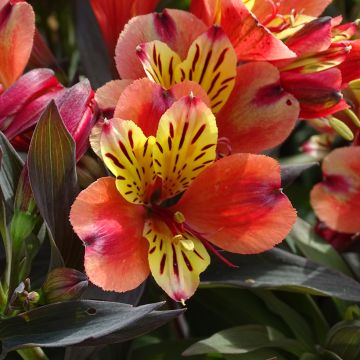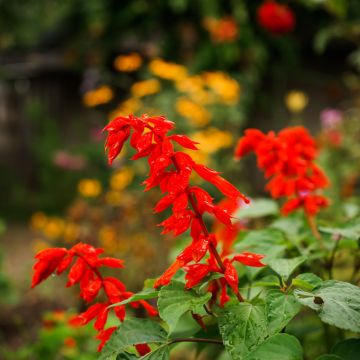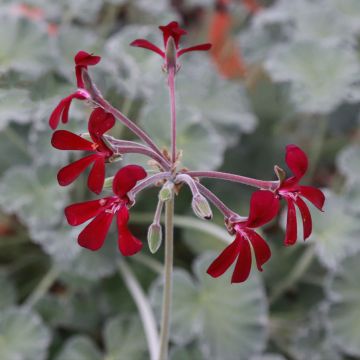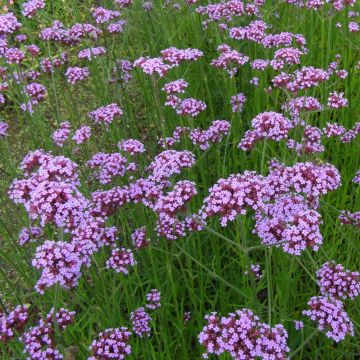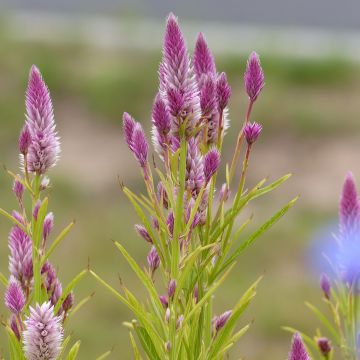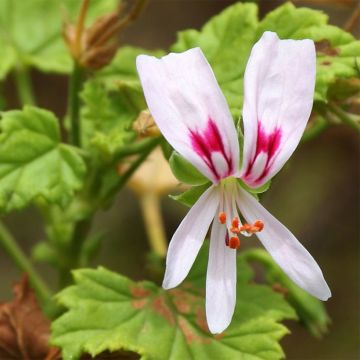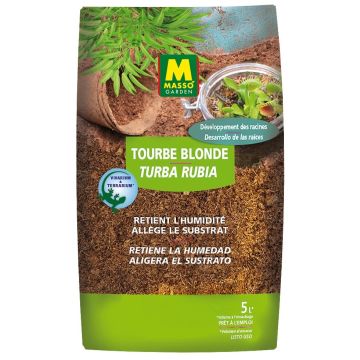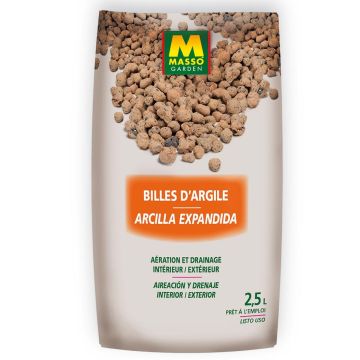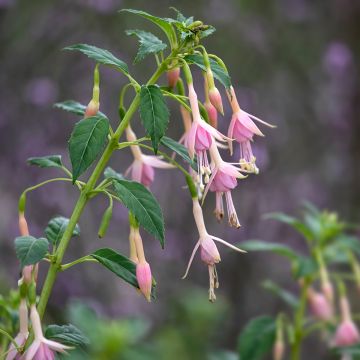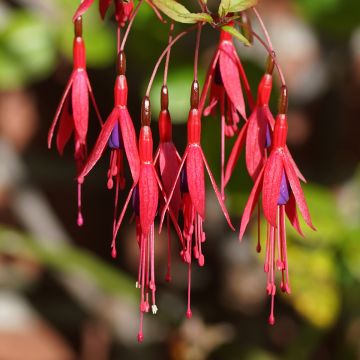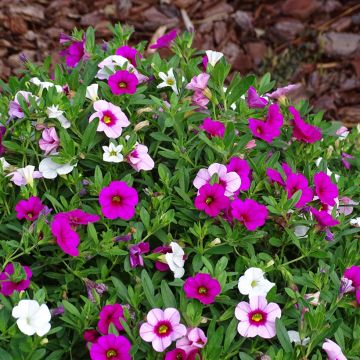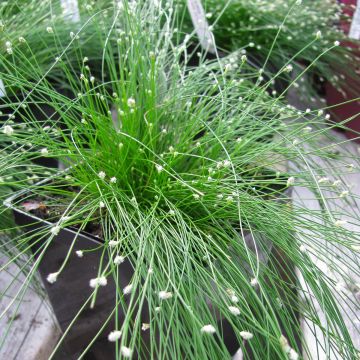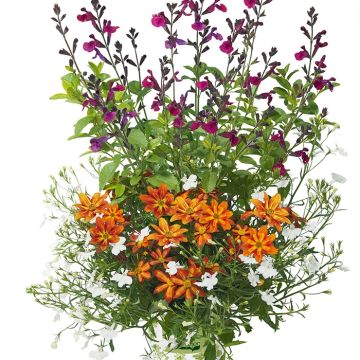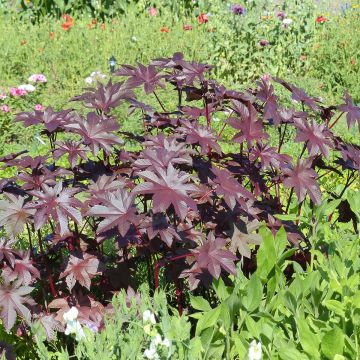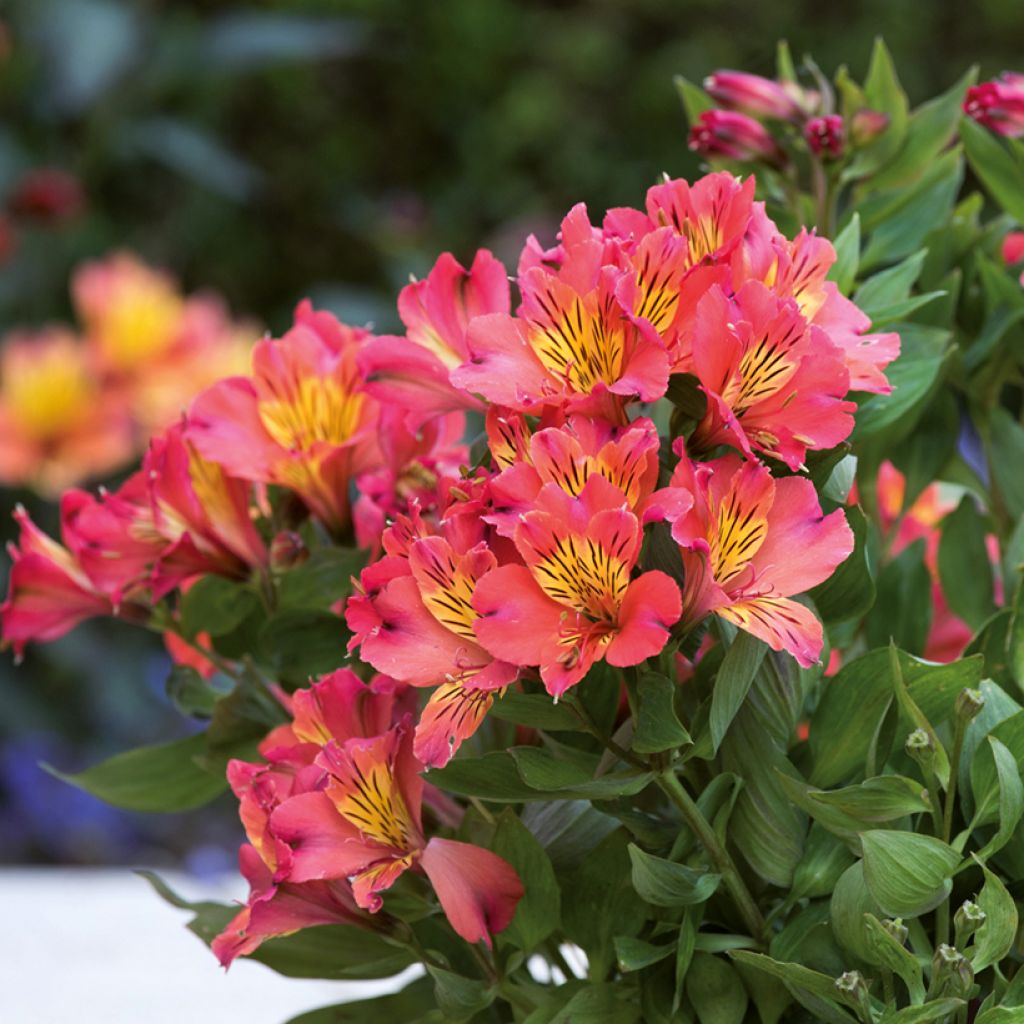

Alstroemeria Valley Girl - Peruvian lily
Alstroemeria Valley Girl - Peruvian lily
Alstroemeria 'Tesvalgirl' Valley Girl
Peruvian Lily, Lily of the Incas
Special offer!
Receive a €20 voucher for any order over €90 (excluding delivery costs, credit notes, and plastic-free options)!
1- Add your favorite plants to your cart.
2- Once you have reached €90, confirm your order (you can even choose the delivery date!).
3- As soon as your order is shipped, you will receive an email containing your voucher code, valid for 3 months (90 days).
Your voucher is unique and can only be used once, for any order with a minimum value of €20, excluding delivery costs.
Can be combined with other current offers, non-divisible and non-refundable.
Home or relay delivery (depending on size and destination)
Schedule delivery date,
and select date in basket
This plant carries a 6 months recovery warranty
More information
We guarantee the quality of our plants for a full growing cycle, and will replace at our expense any plant that fails to recover under normal climatic and planting conditions.

Would this plant suit my garden?
Set up your Plantfit profile →
Description
Alstroemeria 'Valley Girl' is a variety of Peruvian Lily from the 'Summer Paradise Valley' series, distinguished by its warm-coloured flowers combining orange and yellow. This rather compact plant maintains a neat appearance throughout the season and flowers continuously for several months. Although a perennial, it is somewhat frost-sensitive and can easily be grown as an annual. It will beautifully adorn flower beds or patios.
Alstroemeria 'Valley Girl' is a recent Dutch variety. The Summer Paradise® Valley® series, developed in the Netherlands by HilverdaFlorist, comprises compact Peruvian Lily varieties selected for their abundant and prolonged flowering, from May until the first frosts. Designed for cultivation in the ground or in pots, these plants combine a compact habit, great resilience, and hardiness down to -10°C. They produce vibrant-coloured flowers, perfect for beds, borders, and creating long-lasting bouquets.
Alstroemeria 'Valley Girl' forms clumps of sturdy leafy stems, reaching about 40-50 cm in height when in flower, within a few months. The wide-open flowers are gathered in small clusters at the stem tips. They consist of 3 small central petals, pale yellow with brown streaks, surrounded by 3 broader petals in a coral-pink orange hue. The foliage is clustered towards the upper part of the stems. The leaves of this variety are a bright green. Both foliage and stems die back in winter, leaving only the underground fleshy-rooted running tuber. This tuber is sensitive to transplant shock, especially in older plants, so it is best not to move it once established.
Alstroemeria 'Valley Girl' is an excellent bedding plant. This perennial provides a radiant display in borders and also thrives in patio pots. It pairs beautifully with purple perennial sages like 'Caradonna' or white ones like 'Schneehügel'. You can also combine it with yellow or orange-flowered bushy sages, and of course with other varieties from the Summer Paradise series like 'Times Valley'. It also makes bright, cheerful bouquets.
Note: Please be aware that our plug plants are products intended for experienced gardeners. Upon receipt, transplant them and store them under cover (conservatory, greenhouse, cold frame...) at a temperature above 14°C for a few weeks before planting them outdoors once the risk of frost has completely passed.
Report an error about the product description
Alstroemeria Valley Girl - Peruvian lily in pictures
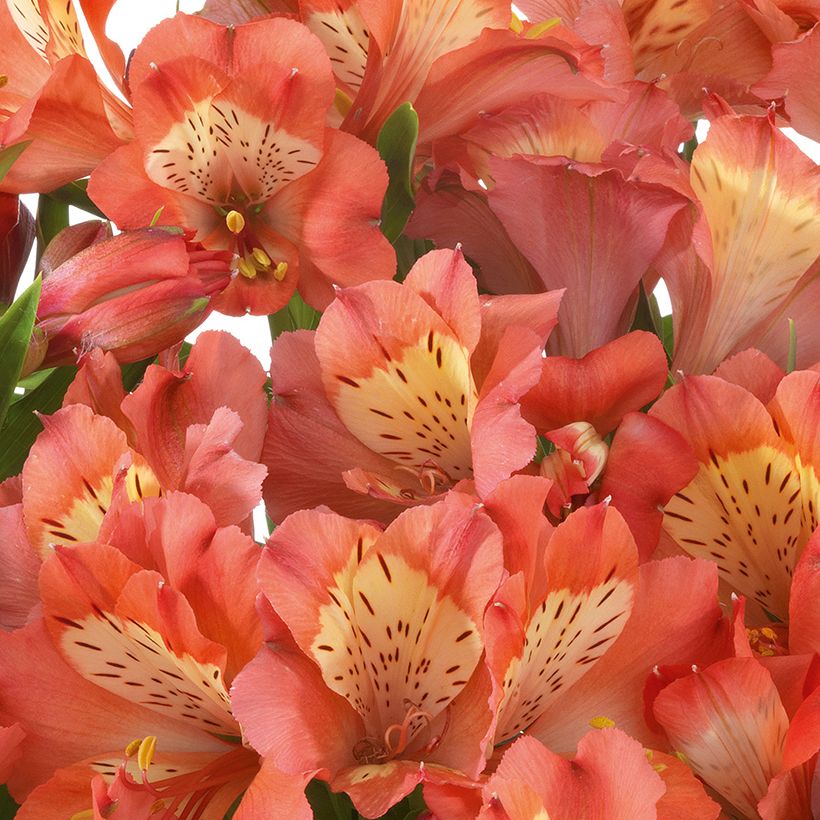

Flowering
Foliage
Plant habit
Botanical data
Alstroemeria
'Tesvalgirl' Valley Girl
Alstroemeriaceae
Peruvian Lily, Lily of the Incas
Cultivar or hybrid
Other Annuals A to Z
View all →Planting and care
Alstroemeria 'Valley Girl' should be planted in spring, choosing a spot with morning sun or partial shade, in light, well-drained, well-worked soil with a sandy or loamy texture, low in lime, neutral to slightly acidic, and not overly fertile. While they appreciate some moisture to support their flowering, they adapt quite well to slightly dry soils in summer. These plants are fairly hardy provided the soil does not remain waterlogged in winter. You can protect the crown with a thick mulch of leaves or fern fronds in autumn. Slugs are particularly fond of young shoots, so be sure to protect them.
Planting period
Intended location
Care
This item has not been reviewed yet - be the first to leave a review about it.
Similar products
Haven't found what you were looking for?
Hardiness is the lowest winter temperature a plant can endure without suffering serious damage or even dying. However, hardiness is affected by location (a sheltered area, such as a patio), protection (winter cover) and soil type (hardiness is improved by well-drained soil).

Photo Sharing Terms & Conditions
In order to encourage gardeners to interact and share their experiences, Promesse de fleurs offers various media enabling content to be uploaded onto its Site - in particular via the ‘Photo sharing’ module.
The User agrees to refrain from:
- Posting any content that is illegal, prejudicial, insulting, racist, inciteful to hatred, revisionist, contrary to public decency, that infringes on privacy or on the privacy rights of third parties, in particular the publicity rights of persons and goods, intellectual property rights, or the right to privacy.
- Submitting content on behalf of a third party;
- Impersonate the identity of a third party and/or publish any personal information about a third party;
In general, the User undertakes to refrain from any unethical behaviour.
All Content (in particular text, comments, files, images, photos, videos, creative works, etc.), which may be subject to property or intellectual property rights, image or other private rights, shall remain the property of the User, subject to the limited rights granted by the terms of the licence granted by Promesse de fleurs as stated below. Users are at liberty to publish or not to publish such Content on the Site, notably via the ‘Photo Sharing’ facility, and accept that this Content shall be made public and freely accessible, notably on the Internet.
Users further acknowledge, undertake to have ,and guarantee that they hold all necessary rights and permissions to publish such material on the Site, in particular with regard to the legislation in force pertaining to any privacy, property, intellectual property, image, or contractual rights, or rights of any other nature. By publishing such Content on the Site, Users acknowledge accepting full liability as publishers of the Content within the meaning of the law, and grant Promesse de fleurs, free of charge, an inclusive, worldwide licence for the said Content for the entire duration of its publication, including all reproduction, representation, up/downloading, displaying, performing, transmission, and storage rights.
Users also grant permission for their name to be linked to the Content and accept that this link may not always be made available.
By engaging in posting material, Users consent to their Content becoming automatically accessible on the Internet, in particular on other sites and/or blogs and/or web pages of the Promesse de fleurs site, including in particular social pages and the Promesse de fleurs catalogue.
Users may secure the removal of entrusted content free of charge by issuing a simple request via our contact form.
The flowering period indicated on our website applies to countries and regions located in USDA zone 8 (France, the United Kingdom, Ireland, the Netherlands, etc.)
It will vary according to where you live:
- In zones 9 to 10 (Italy, Spain, Greece, etc.), flowering will occur about 2 to 4 weeks earlier.
- In zones 6 to 7 (Germany, Poland, Slovenia, and lower mountainous regions), flowering will be delayed by 2 to 3 weeks.
- In zone 5 (Central Europe, Scandinavia), blooming will be delayed by 3 to 5 weeks.
In temperate climates, pruning of spring-flowering shrubs (forsythia, spireas, etc.) should be done just after flowering.
Pruning of summer-flowering shrubs (Indian Lilac, Perovskia, etc.) can be done in winter or spring.
In cold regions as well as with frost-sensitive plants, avoid pruning too early when severe frosts may still occur.
The planting period indicated on our website applies to countries and regions located in USDA zone 8 (France, United Kingdom, Ireland, Netherlands).
It will vary according to where you live:
- In Mediterranean zones (Marseille, Madrid, Milan, etc.), autumn and winter are the best planting periods.
- In continental zones (Strasbourg, Munich, Vienna, etc.), delay planting by 2 to 3 weeks in spring and bring it forward by 2 to 4 weeks in autumn.
- In mountainous regions (the Alps, Pyrenees, Carpathians, etc.), it is best to plant in late spring (May-June) or late summer (August-September).
The harvesting period indicated on our website applies to countries and regions in USDA zone 8 (France, England, Ireland, the Netherlands).
In colder areas (Scandinavia, Poland, Austria...) fruit and vegetable harvests are likely to be delayed by 3-4 weeks.
In warmer areas (Italy, Spain, Greece, etc.), harvesting will probably take place earlier, depending on weather conditions.
The sowing periods indicated on our website apply to countries and regions within USDA Zone 8 (France, UK, Ireland, Netherlands).
In colder areas (Scandinavia, Poland, Austria...), delay any outdoor sowing by 3-4 weeks, or sow under glass.
In warmer climes (Italy, Spain, Greece, etc.), bring outdoor sowing forward by a few weeks.






























